

World Heritage Sites
designated by
UNESCO
the World Heritage Committee has inscribed 890 properties on the World Heritage List
The following are some I have visited:

Petra
Inhabited since prehistoric times, this Nabataean caravan city was an important crossroads between Arabia, Egypt and Syria-Phoenicia. Pétra, half-built, half-carved in the rock within a ring of mountains and riddled with passages and gorges, is one of the most famous archaeological sites in the world, where ancient Eastern traditions blend with Hellenistic architecture.
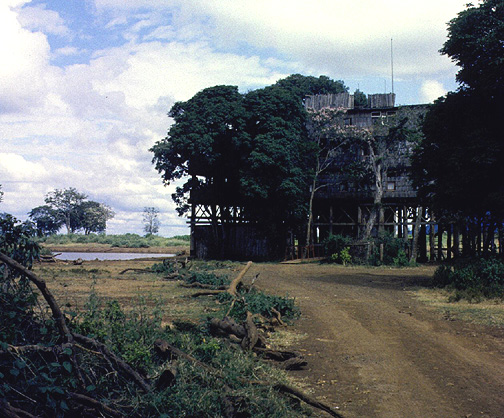
Treetops
(lodge where Princess Elizabeth was staying the night she learned she had become
Queen)
Mount Kenya, 5,199 m, is the second highest peak in Africa. It is an ancient extinct volcano, during whose period of activity 3.1 - 2.6 million years ago it is thought to have risen to 6,500 m. There are twelve remnant glaciers on the mountain, all receding rapidly, and four secondary peaks that sit at the head of the U-shaped glacial valleys. The area inscribed includes the upper slopes of the mountain, and two salients which make up the National Park and surrounding Forest Reserve. With its rugged glacier-clad summits and forested middle slopes, Mount Kenya is one of the most impressive landscapes in Eastern Africa. The evolution and ecology of its afro-alpine flora also provide an outstanding example of ecological processes.
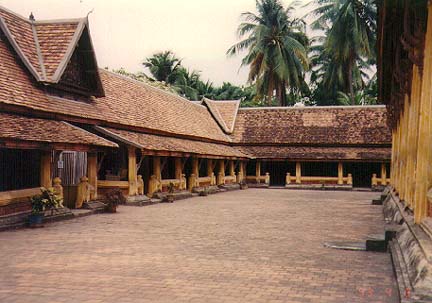
Wat Phrakaco
This town reflects the exceptional fusion of traditional architecture and urban structures built by 19th and 20th century European colonial rulers. Its unique township is remarkably well preserved, illustrating a key stage in the blending of these two distinct cultural traditions.
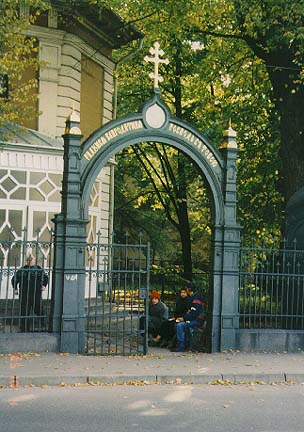
Orthodox church in RIGA
Riga was a major centre of the Hanseatic League and prospered from its trade with central and eastern Europe in the 13th-15th centuries. The urban fabric of its medieval centre reflects this prosperity, although most of its earlier buildings have been destroyed by fire and war. In the 19th century it became a very important economic centre, and the suburbs of the medieval town were built, first in imposing wooden buildings in classical style and then in Jugendstil. It is generally recognized that Riga contains the finest concentration of Art Nouveau buildings in Europe.
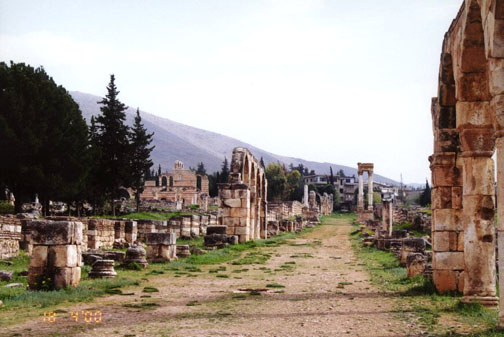
the Anjar site with great palace in the background
The ruins of Anjar, a city founded by Caliph Walid I at the beginning of the 8th century, has a very methodical layout, reminiscent of the palace-cities of ancient times. It is a unique testimony to Omayyad city-planning.
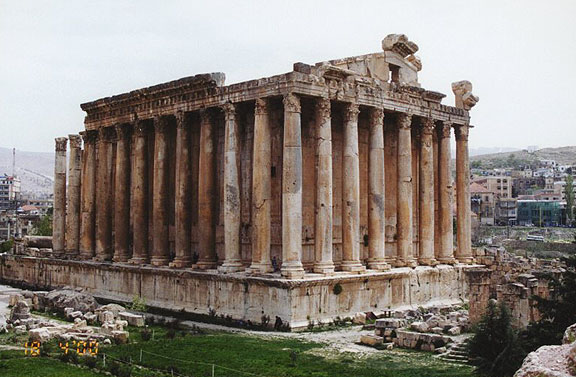
Temple of
Bacchus
(dedicated to Venus/Astarte)
This Phoenician city, the seat of a worship to a triad of deities, was known as Heliopolis during the Greek period. It retained its religious function in Roman times when the sanctuary of Heliopolitan Jupiter drew thousands of pilgrims. Baalbek, with its colossal structures, is one of the most impressive examples of Imperial Roman architecture at its apogee.
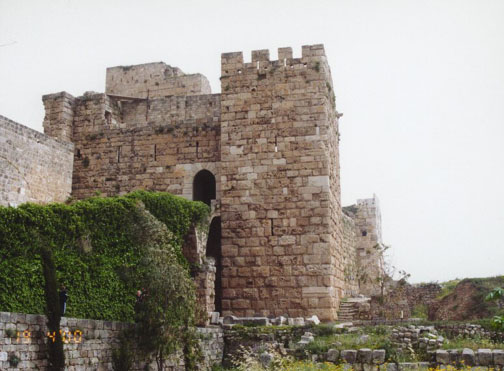
Crusader
castle
(built by the Franks in the 12th century)
Byblos is the site of the multi-layered ruins of one of the most ancient cities of Lebanon, inhabited since Neolithic times and closely tied to the legends and history of the Mediterranean region for many thousands of years. Byblos is directly associated with the history of the diffusion of the Phoenician alphabet.
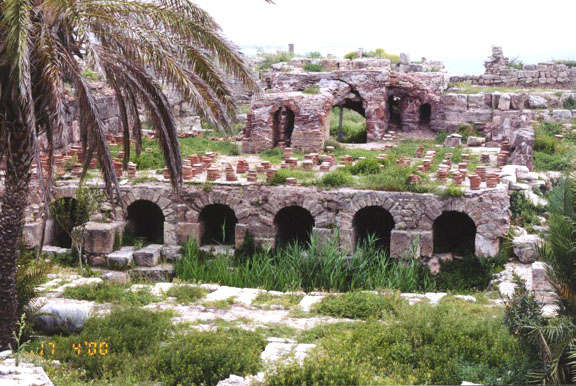
Roman bath
Tyre, where, according to legend, the purple dye was invented, was the great Phoenician city that ruled the seas and founded prosperous colonies such as Cadiz and Carthage. Its historical role declined at the end of the Crusades. It conserves important archaeological remains, mainly from Roman times.
|
Ouadi Qadisha (the Holy Valley) and the Forest of the Cedars of God (Horsh Arz el-Rab) , Lebanon |
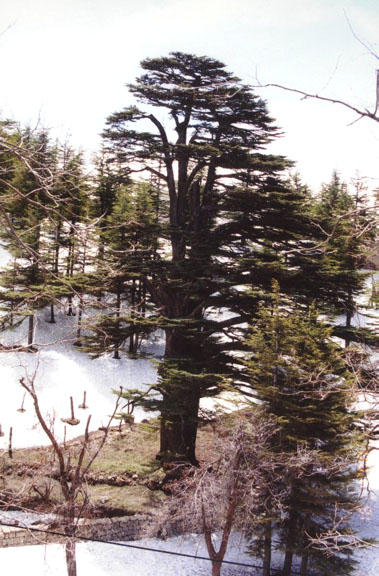
One of the remaining old Cedars of Lebanon
The Qadisha Valley is one of the most important early Christian monastic settlements in the world, and its monasteries, many of great age, are positioned dramatically in a rugged landscape. Nearby are the remains of the great forest of the Cedars of Lebanon, which were highly prized for the construction of great religious buildings in Antiquity.
| Archaeological Site of Leptis Magna, Libyan Arab Jamahiriya |
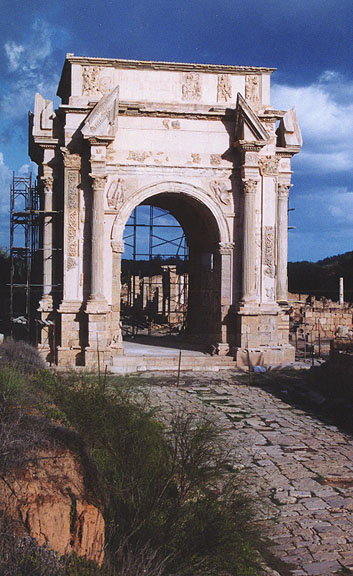
Arch honoring
Roman emperor Lucius Septimius
Severus (AD 146-211)
Leptis Magna was enlarged and embellished by Septimio Severo, who was born there and later became emperor. It was one of the most beautiful cities of the Roman Empire, with its imposing public monuments, man- made harbour, market place, storehouses, shops and residential districts.
| Archaeological Site of Sabratha, Libyan Arab Jamahiriya |
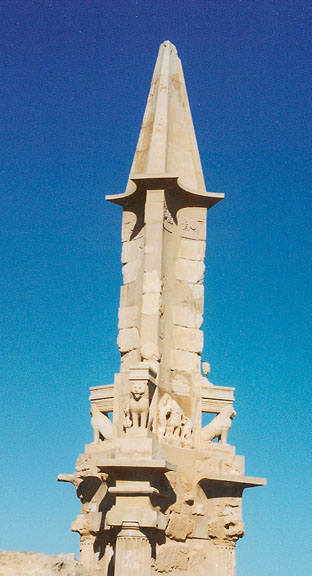
Puno-Hellenistic Mausoleum of Bes
A Phoenician trading-post that served as an outlet for the products of the African hinterland, Sabratha was part of the short-lived Numidian kingdom of Massinissa before being Romanized and rebuilt in the 2nd and 3rd centuries A.D.
| Archaeological Site of Cyrene, Libyan Arab Jamahiriya |
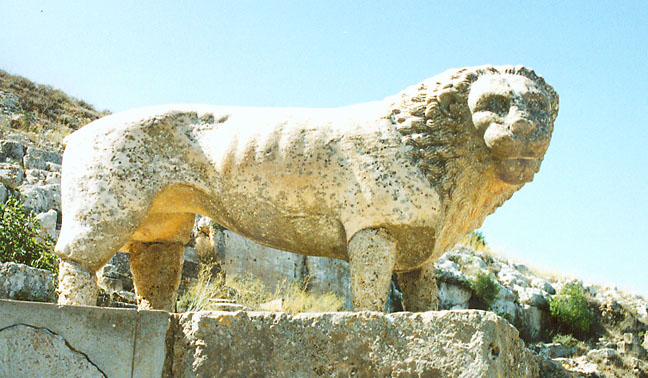
Cyrene
A colony of the Greeks of Thera, Cyrene was one of the principal cities in the Hellenic world. It was Romanized, and remained a great capital until the earthquake of 365. A thousand years of history is written in its ruins, famous since the 18th century.
| Old Town of Ghadames, Libyan Arab Jamahiriya |
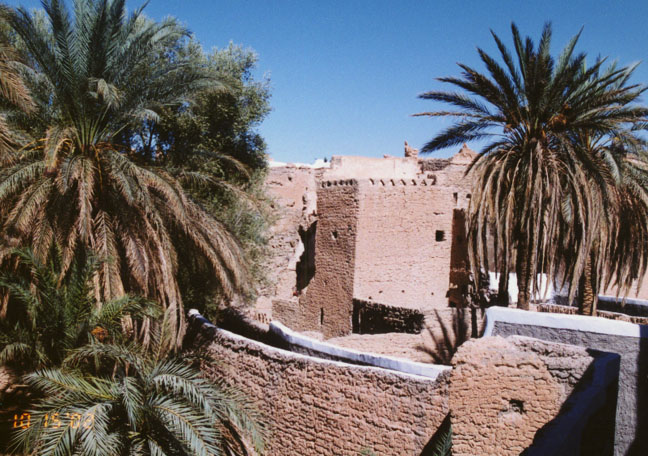
old town
Built in an oasis, Ghadamès, "the pearl of the desert", is one of the oldest pre-Saharan cities and an outstanding example of a traditional settlement. Its architecture is characterised by the different functions assigned to each storey - the ground floor used to store supplies, another floor extending over dark enclosed passages forming a system of passageways, and the open-air terraces reserved for women.
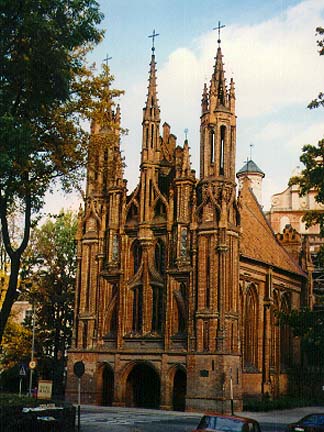
Church of St. Ann, Vilnius
Political centre of the Grand Duchy of Lithuania from the 13th to the end of the 18th century, Vilnius has had a profound influence on the cultural and architectural development of much of Eastern Europe. Despite invasions and partial destruction, it has preserved an impressive complex of historic Gothic, Renaissance and Baroque buildings.
|
The City of Luxembourg: Its Old Quarters and Fortifications, Luxembourg |

Because of its strategic position, Luxembourg was from the 16th century until 1867, when it became neutral, one of Europe's greatest fortresses. Repeatedly fortified as it passed from one great European power to another (the House of Burgundy, the Habsburgs, the French and Spanish Kings, and the Holy Roman Emperors), its fortifications were, until their partial dismantlement, an epitome of military architecture spanning several centuries.
My Life List of World Heritage sites I have visited
![]()
Return to Favorite Experiences page
![]()